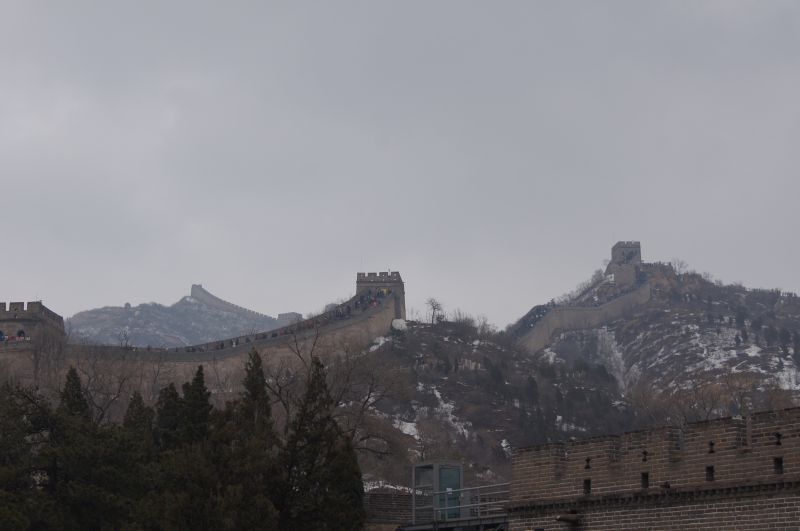

The Great Wall is one of the greatest wonders in the world. It is also the most important magnificent architecture. It was the greatest military defence in ancient China.
Constructing of the Great Wall first began during the Spring and Autumn period and Warring States period (770–221 B.C.). At that time, walls were built by some warring states to protect their territories. In 221 B.C., Qin Shi Huang, who was the first emperor in Qin, unified China, he linked up the separated walls and had them extended into a ten-thousand-li wall. From then on, the Great Wall was rebuilt in some dynasties. But most of them were damaged in varying degrees because of the historical reasons. At present, Only the Ming wall is best preserved.
The Ming wall stretches from Yalu River in the east to Jiayuguan Pass in the west, covering a total length of more than 6000 kilometers. It traverses 5 provinces, 2 autonomous regions and 2 municipalities in northern China. They are Lianing, Hebei, Tianjin, Beijing, Shanxi, Inner Mongolia, Shaanxi, Ningxia and Gansu.
Badaling is the advanced point of Juyongguan Pass. This section of the Great Wall is more than 7 meters high and 5 meters wide. Many fortresses and beacon towers have been constructed at the strategic points along the Great Wall. The Great Wall was designated a major historical relic under state protection in 1961.
The Chinese government has paid great attention the the Badaling section of the Great Wall since the P.R.C. was founded. Badaling Great Will is an essential part of the Great Wall, and received the World's Culture Heritage certificate by the UNESCO in 1987. And now, is is preserved as a historic monument and becoming one of the most popular tourist spots in the world.
This work by Matthew Blissett is licensed under a Creative Commons Attribution-ShareAlike 3.0 Unported License.
Permissions beyond the scope of this license may be available at http://matt.blissett.me.uk/contact/.